EVALUATING CHINA’S NOMINATION OF HOH XIL NATURE RESERVE TO BECOME A UNESCO WORLD HERITAGE NATURAL PROPERTY
#1 of a series of 3 blogs
The cute Tibetan chiru antelope mascot of the Beijing Olympics is to be saved, by making its winter pastures and summer birthing grounds UNESCO World Heritage. Before China reached the Tibetan Plateau in the 1950s, there were at least one million chiru, now there at most 150,000. After decades of relentlessly hunting the chiru, by protein hungry Chinese revolutionary soldiers and by poachers monetising the downy chiru underfur, after decades of increasingly effective Tibetan ranger patrols to stop the poachers, China has now come up with the ultimate solution: UNESCO inscription.
The Tibetan antelope, pantholops hodgsonii to scientists, tsö in Tibetan, is better known globally as the chiru.This series of three blogs is an analysis of China’s case. UNESCO will make its decision in July 2017 at the meeting of the World Heritage Committee in Krakow, Poland. Until then, the merits of China’s nomination, and the Tibetans’ counter proposal, of a community controlled Sacred Natural Site under local Tibetan management, are open for all to consider.
China insists this is a “no-man’s land”, uninhabited, a terra nullius, with no human inhabitants, so the question of human rights does not arise. This the heart of the issue.
WHY HOH XIL?
The 77,000 km2 China proposes as World Heritage, big as it is, constitutes only a minor portion of a band of nature reserves China has created across the entire width of the Tibetan Plateau. Hoh Xil stands in the middle, with the Changtang (empty plain) to the west and Sanjiangyuan (three river source) to the east. Together they encompass the entire range of the iconic Tibetan antelope, both the Hoh Xil winter feeding grounds in the higher rainfall east, and their arid Changtang birthing grounds in summer, where monsoon rains bring a brief flush of grass, and the young have less to fear from wolves.
According to China’s nomination, this is all about protecting the chiru antelope, yet the birthing grounds, in the first of the Tibetan nature reserves to have been declared, is not part of this proposal. So we might ask, from the outset, why Hoh Xil?
One answer is that Hoh Xil is the only terrain in the three contiguous, interlocked nature reserves that is bisected by a railway, highway and infrastructure engineering corridor, for 250 kms, with four stations already built but until now hardly used. Hoh Xil is set for a tourism boom, safari tourism for adventurous domestic and international visitors arriving by train from China’s major cities. Only Hoh Xil has such amenities.
The analysis below situates Hoh Xil in the middle of the three great nature reserves, contextualising it as the centrepiece of a swathe of zones that increasingly exclude customary Tibetan land use, situate the state as the sole agency, and encourage mass tourism. Because Changtang and Hoh Xil together constitute the range of the chiru; because Hoh Xil’s 45,00 km2 and a further 32,00 km2 of Sanjiangyuan now jointly constitute the application before UNESCO, these three, in their west to east band across the entire plateau, are joined, and need to be considered together. What UNESCO decides for Hoh Xil in 2017 may soon apply to Changtang and the rest of Sanjiangyuan soon.
The Hoh Xil Nature Reserve, soon to be upgraded to the Hoh Xil UNESCO World Heritage property, was the first substantial portion of the Tibetan Plateau in Qinghai province to be formally set aside for conservation, setting a precedent for later extensions, into the best pasture lands and more heavily populated areas of the Tibetan Plateau. Today, half of the Tibetan Plateau is designated as nature reserve, setting up either/or clashes between human pastoralists and wild animals, ending the sustainable co-existence of wild and domestic, that had persisted for thousands of years.
In China’s imagination Hoh Xil is waste land, but to Tibetan pastoralists it is part of their range, and the counties of Hoh Xil are all populated by resourceful, hardy pastoralists, with their herds of yaks, sheep and goats. Using data from the 2000 Census, of the counties of Hoh Xil, all in Yushu prefecture, Chumarleb had a Tibetan population of 23,600; Trindu/Dzato a Tibetan population of 39, 750; Drito 23,407. In each county the Tibetan population was at least 96.7 per cent of the total population, with only a small number of immigrant Han Chinese officials in senior positions.
These pastoralists have long made skilful use of drylands which no other civilisation, including contemporary China, has ever found any way of making humanly habitable, productive and sustainable. The secret of the success of the Tibetan pastoralists is their mobility, adaptability and capacity to live off uncertainty. It is this remarkable flexibility that has made one of the driest areas of the Tibetan Plateau a production landscape in season, and thus a cultural landscape. UNESCO’s Mechtild Rossler draws our attention to just such cultural landscapes already recognised by UNESCO as World Heritage, such as the Puzta pastoral landscape of Hortobagy National Park in Hungary, and several Australian sites, designated by both the nominating government and by UNESCO as hybrid cultural landscapes precisely because, in these sacred lands, there is so little disturbance to the landscape, so little human construction.[1] Mechtild Rossler argues that “The inclusion of such landscapes on the World Heritage List is justifiable by virtue of the powerful religious, artistic or cultural associations of the natural element rather than material cultural evidence, which may be insignificant or even absent. This type is exemplified by Uluru Kata Tjuta in Australia, Sukur in Nigeria and Tongariro National Park in New Zealand.” These criteria fit Hoh Xil exactly.
Further west, in the adjacent Changtang nature reserve Gertse County early this century had a human population of 17,200; Shentsa county 16,600 and Palgon County over 33,000.[2] Ruthok County in the farthest west had just over 7000, and Nyima 33,860. Again, in each county Tibetans were nowhere less than 97.6 per cent of the total population.[3] Although Hoh Xil and Changtang are usually regarded as Tibet’s empty quarter, they are home to resourceful pastoralists with a long backstory. To the east, Sanjiangyuan is much more densely populated.
Scientific mapping often defines Hoh Xil as extending far west, into what China classifies as the Changtang of Tibet Autonomous Region, distinct from Hoh Xil of Qinghai province. While they may be politically two separate provinces, from a scientific viewpoint it is only by eliding Changtang and Hoh Xil that the seasonal range of the iconic chiru is inclusively defined.
The total Tibetan population of Changtang and Hoh Xil in 2000 was 193,228. That’s not a lot by Chinese standards, but it was their registered homeland, where, under China’s restrictive hukou household registration system, they were required to stay. Now, in the name of conservation, they are increasingly required to leave. The people of the production landscapes of this huge area managed wild and domestic herds mingling sustainably, in a vast Lakeland without fences, for millennia, even though nomads did hunt.
Gazelles leaping
EXCLUSIONARY REGULATIONS
In 1994 China promulgated official regulations governing the creation and administration of nature reserves. These regulations, currently in effect, enact a governance regime predicated on the model of nature reserves as areas of special beauty, biological diversity and outstanding qualities. In keeping with this model, the Regulations require that there be a science-based classification, within each nature reserve, into core zones, buffer zones and outer zones. The core zone, to be policed most strictly, is the zone from which all human activity is prohibited, even scientific research and visitors, in order that what is most precious is given best opportunity to flourish unimpeded by human presence of any sort.
The nature reserve regulations are clearly aimed at protecting that which is most precious, beautiful and exceptional. The regulations state: “Article 18. Nature reserves may be divided into three parts: the core zone, buffer zone and experimental zone. The intact natural ecological systems and the areas where precious rare and vanishing wildlife species are concentrated within nature reserves shall be delimited as the core zone into which no units or individuals are allowed to enter. No scientific research activities are allowed in this zone except for those approved according to Article 27 of these Regulations. Certain amount of area surrounding the core zone may be designated as the buffer zone, where only scientific research and observation are allowed. The area surrounding the buffer zone may be designated as the experimental zone, where activities such as scientific experiment, educational practice, visit, tourism and the domestication and breeding of precious, rare and vanishing wildlife species may be carried out.”[4]
In keeping with this strict regime of human exclusion from the purity of nature, the regulations are sweepingly comprehensive as to which human activities are banned, including both customary and modern uses of land: “Article 26. In nature reserves, such activities as felling, grazing, hunting, fishing, gathering medicinal herbs, reclaiming, burning, mining, stone quarrying and sand dredging, shall be prohibited unless otherwise stipulated by relevant laws and regulations.”
Because traditional practices such as grazing domestic animals and medicinal herb gathering are criminalized, these enforceable rules, as is often the case in China, are deeply ambivalent about the human beings whose home has always been those lands now declared to be nature reserve. May they stay, or must they go?
On one hand, the regulations state: “Article 5. The local economic construction, the production activities and everyday life of local residents shall be properly taken into consideration in the establishment and management of a nature reserve. Article 14. Proper consideration shall be given to the integrity and suitability of the protected objects and to the needs of local economic construction, and production activities and the daily life of local residents while determining the ranges and boundaries of nature reserves.”
On the other hand, the same regulations also state: “Article 27. Nobody may be allowed to enter the core zone of nature reserves. If it is necessary for the residents living in the core zone of a nature reserve to move out, the local people’s government shall make proper arrangement to have them settled down elsewhere. Article 35. Any unit or individual who, in violation of these Regulations, is engaged in such activities as felling, grazing, hunting, fishing, gathering medicinal herbs, reclaiming, burning the grass, mining, stone-quarrying and sand dredging, shall be punished according to relevant laws, administrative regulations. Article 24. The public security organ of the region where the nature reserves are located may set up its dispatched agency within the nature reserves to maintain public security if necessary. Article 25. The units, residents in the nature reserves and the personnel allowed to enter into the nature reserves shall comply with various regulations of administration, and subject themselves to the management institutions of the nature reserves.”
This ambivalence towards local communities whose homelands are proclaimed a nature reserve is not unusual. Many laws and regulations in China do the same, as will become apparent.
China’s official nomination proposal specifically labels traditional pastoral land use a threat, along with more obvious dangers. In a section on threats, China’s application (p 137) for Hoh Xil states: “Human activities such as harvesting, hunting, herding, road building, and urban construction still impose negative impacts on nature; the affected ecosystems and wildlife habitats can’t recover fast enough.” China’s hostility to Tibetan pastoralism is explicit (p139): “Grazing, in particular, threatens the existence of the pristine ecology and wildlife in the core zone. Grazing can deteriorate wildlife habitat and competes with wildlife for land.” In reality, Tibetan mobile pastoralism and migratory wild herds co-existed, intermingling, for thousands of years, with no suggestion of any species being under threat.[5]
What has grievously disrupted chiru habitat and mobility in recent years is China’s policy of mandatory fencing. Several wildlife biologists have documented the harm done to migrating chiru by the official policy of requiring Tibetan pastoralists, at great expense, to fence the lands allocated to them. A team of three wildlife conservationists in 2009 showed that, while chiru can often leap fences, they also often are stranded on them, and die slowly.[6]
Everything China says denies the ongoing Tibetan human presence in Hoh Xil, and long history of Tibetans sustainably curating the land. If China’s proposal is taken at face value, there is no need for UNESCO and/or IUCN to seek out local land users and discover which mode of wildlife protection they embrace –top-down or bottom-up, World Heritage or Sacred Natural Site. The danger lies in the scientists of IUCN, acting for UNESCO, accepting the framework presented by the scientists who have written this nomination, in which Hoh Xil is all about tectonic evolution, geology, petrology, geochemistry, biology, botany and zoology. These are the focus of the 188 pages of China’s application, while at every turn denying a contemporary human presence.
INGRAINED SEDENTARY BIAS
China’s insistence that this is an empty, unpopulated land and hence no need for consultation or the negotiation of free, prior and informed consent, is based on China’s hukou household registration system. Hukou registration requires each citizen of China to have a specific address which, if rural, prevents migration to cities, except for temporary employment.
The hukou system, often criticised because it impedes free movement of labour and suppresses the wages of rural migrants, is, in nomadic pastoral areas, based on a fiction. Administratively, even Tibetan pastoral nomads live in villages, of known location. As these are usually in overwintering areas, and as pastoralists make most use of Hoh Xil in summer, in the rain months, Hoh Xil can be declared a “no-man’s land.”
This is a profoundly sedentary definition of livelihoods that in reality thrive on mobility. By categorising pastoralists making skilled use of the 77,000 sq. kms of Hoh Xil/Sanjiangyuan putative World Heritage as non-resident, there is no need to trigger the many provisions of the UN Declaration on the Rights of Indigenous Peoples, Article 8j of the Convention on Biodiversity, and the many human rights instruments that require at the very least effective consultation with local communities, at best comanagement with local communities as equal parties with the state.
By declaring the human Hoh Xil production landscape users non-existent, China effectively declares them a migratory species, like the chiru.
Categorising indigenous peoples as fauna has a long and sad history, for example, the British declaration that Australia was terra nullius, an empty land whose human inhabitants could be ignored, with whom no negotiations or treaty was necessary.
China has a long history of categorising Hoh Xil as “no-man’s land”, making China’s “conquest” of Hoh Xil’s altitude during the railway construction all the more heroic.
When the single gtrack rail line to Lhasa became operational in 2006, China issued stamps in celbration, aqnd China daily announced: “The Chinese State Post Bureau issued a set of stamps on Saturday to mark the opening of the Qinghai-Tibet Railway, the world’s longest plateau railroad. The set, including three stamps, with each 80 fen (10 US cent) of face value, respectively depicts a train running through the Hoh Xil no man’s land, a train climbing over the Tanggula Mountain and the Lhasa Station, the railway’s terminal. The railway is projected to help double tourism revenues by 2010.”
TIBETAN GUARDIANS OF WILDLIFE PROTECTION
Despite the increasing aridity of the Changtang and Hoh Xil, these huge areas are populated, and are not at all “no-man’s land.” This is even more so of the adjacent Sanjiangyuan nature reserve which includes the best pasture lands of the Tibetan Plateau, and the most densely populated. If, in some areas, there are no people left, it is because they have been removed, by official decree, in the name of conservation, not because these districts are inevitably a “no-man’s land.”
Removing people from these breeding and birthing grounds of the prized chiru antelope does not advance the cause of conservation; it removes the guardians of wildlife, leaving the land open to poachers. The core of Hoh Xil is Chumarleb, a county abundant in chiru, vulnerable to illegal hunters with rifles because of the soft downy fur of their underbellies, used to make the softest and most luxurious of shawls: shahtoosh.
Tibetans of Hoh Xil and adjacent rangelands have been proactively protecting endangered wildlife for decades, ever since the compulsory herding of Tibetans onto livestock communes and state farms ceased. The Tibetans of these drylands cared so deeply for the wild animals that had always mingled with their domestic herds that they formed their own patrols, scraping together just enough money for fuel to head out into the toughest terrain to chase after interloping hunters with rifles, who killed chiru antelopes (pantholops hodgsonii) just for a handful of downy underbelly fur.
Out on the alpine desert, at an altitude so high even the fittest cannot run, there were no regular police, China’s law enforcement capacity did not extend that far, and it was, as the 2004 hit film Kekexili: Mountain Patrol vividly depicted, man on man, and each in danger of being swallowed by sandstorm or sinkhole. Nothing deterred these courageous Tibetans appalled at decades of slaughter of chiru, which they had been powerless to prevent. In the early 1990s, with new laws ostensibly outlawing indiscriminate poaching, they were given minimal authority to arrest hunters they could catch, and hand them over to the office-bound police. This was China’s lawless wild west.
 In the 1990s, as China’s wildlife protection laws falteringly came into force, it was Tibetans who patrolled these cold and arid expanses, with little equipment, and almost no budget. Initially the authorities were happy to spare themselves the expense of serious enforcement, relying instead on outsourcing regulatory compliance to the mountain patrols of Tibetans scraping together enough fuel to keep their jeeps bouncing across the dunes in pursuit of the slaughterers, often arriving to late, to find a pile of dead chiru. Not only did local governments outsource enforcement to Tibetan environmentalists, their successful mountain patrols became news, resulting in a famous 2004 movie recreating their dangerous work. Mountain Patrol or Kekexili –it was marketed under both names- became a film festival hit, a wild west true adventure, featuring men who do whatever it takes to bring to justice the chiru killers.
In the 1990s, as China’s wildlife protection laws falteringly came into force, it was Tibetans who patrolled these cold and arid expanses, with little equipment, and almost no budget. Initially the authorities were happy to spare themselves the expense of serious enforcement, relying instead on outsourcing regulatory compliance to the mountain patrols of Tibetans scraping together enough fuel to keep their jeeps bouncing across the dunes in pursuit of the slaughterers, often arriving to late, to find a pile of dead chiru. Not only did local governments outsource enforcement to Tibetan environmentalists, their successful mountain patrols became news, resulting in a famous 2004 movie recreating their dangerous work. Mountain Patrol or Kekexili –it was marketed under both names- became a film festival hit, a wild west true adventure, featuring men who do whatever it takes to bring to justice the chiru killers.
These were local Tibetan men, whose hearts grieved at the mass slaughter. The hunters were seldom local. They were largely Hui, Chinese Muslims coming from other areas of Qinghai, in search of quick money. In scenes where the environmentalists and the poachers confront each other, non-Chinese audiences struggle to identify the ethnic differences, and, as the movie was made in China, it conforms to the official policy of downplaying ethnicity, and does not help the viewer work out who’s who. The harsh landscape featured strongly, a revelation to Chinese audiences who had little idea there is, in their backlot, a frigid, high-altitude desert where men, in mortal combat, move with the balletic slowness of Tibetan monastic courtyard dancers, so thin is the air.
It was a great hit in China, coming out in the same year Chinese and Tibetan environmentalists persuaded central leaders to halt the hydro damming of a wild river in the far southeast, the Nu. China’s government could occasionally be persuaded to change policy. In 2016, it is hard to imagine such a film could be made in China, or pass censorship, or go on to popular success.
A decade ago, these Tibetan successes were openly celebrated in China’s official media. Beijing Youth Daily reported: “On 18 January 1994 Sonam Dargyi and four employees in Hoh Xil patrol confiscated 1600 skins of Tibetan antelopes and seven cars. On the way back they were attacked by other poachers and Sonam Dargyi was killed. Only a few days later his corpse was found. In May 1995, Taba Dorje, an official of the Standing Committee of the Yushu County People’s Congress in Qinghai, returned from his office and built the Ranger Patrol. He called his armed anti-warring group “Wild Yaks “. This group was strong up to 64 men. Only a small part of the staff were officials in Zhidoi (Drito) County. Most were ex-soldiers and unemployed young people. There were even former poachers who had converted to the good. This group was very successful. It covered dozens of cases of poaching and confiscated about 10,000 antelope skins. On 8 November 1998, Taba Dorje was killed. Liang Yinquan was his successor. At the end of 2000 this group was officially disbanded and 24 employees were transferred to the Administrative office.”[7]
The film Kekexili: Mountain Patrol made a major impact at the highest level. Chiru antelopes achieved such a high profile that they became cute mascots for the 2008 Beijing Olympics. But official China, having been embarrassed in the late 1990s at outsourcing wildlife protection law enforcement to Tibetan cowboys, was embarrassed all over again by the 2004 movie, and that prompted the creation of the Hoh Xil nature reserve. Not only was the state, at last, fully in charge, the local Tibetans rapidly became surplus to requirements. Henceforth Chumarleb (Qumalai in Chinese) would be directly under the protection of the state, which soon decided, as the new policy of “closing pasture to grow grass” tuimu huancao became the master narrative that the Tibetans were now a danger to nature, as their herds ate the grass. The Tibetans went from hero to zero.
Now the brave Tibetans who lost their lives, shot by illegal hunters, are officially forgotten, as the state shunts aside all community based wildlife protection, and, under the World Heritage banner, makes biodiversity conservation solely a state operation, with no backstory, with memory of past Tibetan efforts erased. China’s case is focused solely on scientific fact, with no human element.
In official discourse, the Tibetans of Hoh Xil no longer have a role to play in risking their lives to energetically pursue chiru poachers. Worse, their routine rotational grazing of their domestic herds, always moving on so as not to exhaust the grass, is also considered a threat to China’s watersheds. It is no coincidence that Hoh Xil is at the start of the long route of the Yangtze, which not only provides central China with most of its water, but, if current 13th Five-Year Plan announcements are implemented, waters from the upper Yangtze will also be dammed and diverted to the parched Yellow River of northern China. In the name of protecting “China’s Number One Water Tower”, namely Hoh Xil and further downstream in Tibet, pastoralists are being removed, often far from their pastures. One example is the roadside settlement of Tibetans taken from Chumarleb, recently inspected by Xi Jinping, on his tour of the Qinghai industrial city of Gormo (Golmud). It is at Gormo, on the outskirts of a petrochemical industrial town that employs almost no Tibetans that the displaced of Chumarleb are parked, on either side of the highway from inland China to Lhasa, with its endless traffic of trucks thundering past laden with anything and everything China manufactures, coming back usually empty. Xi Jinping, after inspecting, declared himself well pleased. Gormo is far to the north of Chumarleb; it is not possible to return.
Current official policy is based on the assumption that traditional Tibetan pastoral production is incompatible with wildlife conservation, even though Tibetans have died protecting chiru from poachers, and is incompatible with watershed protection and thus has outlived any usefulness.
This is in contrast to the approach taken by two of the world’s biggest environmental NGOs, Conservation International (CI) and World Wildlife Fund (WWF), both of which have worked with Tibetan nomads, in Hoh Xil and the Changtang, to conserve wild animals while also respecting the needs and livelihoods of pastoralists. The experiences of WWF and CI show that it is possible to enlist the local nomad population as allies in biodiversity conservation, even when the needs of the herders and the needs of wild species clash. This occurs most acutely in the case of the drong, the wild yak. Tibetan pastoralists have spent thousands of years breeding strains of domestic yaks that are considerably smaller than wild drong, and more docile by temperament. For this reason, pastoralists fear drong getting into their herds, and mating with dri (female yaks). Similarly, the wolf is much feared, for the harm it does to sheep. These are legitimate concerns, if the pastoralists –the only long-term resident population- are to be part of the solution, and not excluded. This was recognised in 1997, when the University of Tromso, in Arctic Norway, forged a partnership with the Chinese agency officially responsible for administering the Changtang nature reserve, the TAR State Forestry Bureau, the local arm of the Ministry of Forestry. It mattered little that it has been thousands of years since trees grew in Hoh Xil or Changtang, or that the Forestry Bureau had little experience managing rangelands: they were in charge. At that time, the recently established Changtang nature reserve, far from its human population dwindling, was gaining population (to the alarm of George Schaller), adaptably making use of modern mobility, namely auto mobility or more specifically trucks, which enabled nomads to widen their range.
This coincided with the ending of the Hoh Xil Tibetan ranger patrols, after the murder of Tibetan rangers shocked Chinese everywhere; and the declaration of Changtang nature reserve in 1993. The state was officially committed to effective wildlife conservation, but in practice struggled to be effective. Staff were allocated, rather than choosing to be stationed in such a remote area, and had little motivation.
World Wildlife Fund, in partnership with Tibet Forestry Bureau, in 2002, established six wildlife protection stations inside the Changtang, supported by a Tibetan staff of three in Lhasa.[8] WWF staged workshops “to generate conservation awareness among local leaders, reserve managers, and nomads. Selected managers were trained in specific skills.” They set up simple but profitable businesses capable of generating income to support local conservationists. One, in Changtang Nyima County, transported sheep to the nearest market town, where nomads could get almost double the price when they sold surplus sheep to itinerant traders, on their own pasture. Much of the profit was set aside for a compensation fund, for pastoralists who lost animals to attacks by bears, wolves or snow leopards, thus reducing pressure of pastoralists, often living subsistence lives, to kill wildlife. A locally-financed compensation fund is a simple but effective idea, with demonstrable results. Another business idea promoted by WWF in Changtang Tsonyi County was to build a commercial greenhouse, again using the profits “to finance a compensation fund for victims of human-wildlife conflict.”[9]
In China’s nomination for World Heritage listing, none of this is mentioned. All that is said (p.134) is that: “Since the nature reserves [Hoh Xil and Sanjiangyuan] were founded, a series of conservation and patrol mechanisms have been set up and have had great success in controlling poaching and illegal mining. Since 2006, there have not been any illegal poaching activities for Tibetan antelopes in the nominated property. In addition, the administrative bureau [of Forests] has been making every effort on conservation and protection such as wildlife migration protection, rescue of injured animals, community conservation education and volunteer participation, which also leveraged the awareness of the public on conservation.” The last phrase seems to refer to how deeply Tibetans care for animals, so deeply at least two were shot and killed by poachers. Overall, agency now firmly rests with the state, if this master narrative is to be believed.
Four pages later (p 138) , China, as applicant for World Heritage listing, promises to: “Enforce the mountain patrol rules; take action against illegal hunting and harvesting; raise the level of patrol budgets; acquire more patrol equipment.” This suggests the danger of poaching is far from gone, and the removal of the Tibetans only adds to the danger.
*****************
If you wish to join the campaign to make Hoh Xil a Sacred Natural Site, under Tibetan community control, please contact:
Stephan Dömpke
World Heritage Watch e.V.
Palais am Festungsgraben
10117 Berlin, Germany
Tel. +49 (30) 2045-3975 landline
contact@world-heritage-watch.org
[1] Dr Mechtild Rössler (2006) World Heritage cultural landscapes: A UNESCO flagship programme 1992 – 2006, Landscape Research, 31:4, 333-353
[2] Gyurme Dorje, Tibet Handbook 4th edition, Footprint Books, 2009, 393-8
[3] Data from Tibet Township Map & Place Name Index, compiled by Tsering Wangyal Shawa, 2014
[4] Regulations of the People’s Republic of China on Nature Reserves 中华人民共和国自然保护区条例 [已被修订CLI.2.10458(EN), Decree No. 167 of the State Council, 10-09-1994
[5] YanBo Li, Gongbuzeren, WenJun Li, A review of China’s rangeland management policies, IIED, http://pubs.iied.org/10079IIED/?a=W+Li
Yanbo Li, Gongbuzeren, Wenjun Li; Making the most of variability: innovative rangeland management in China, IIED 2015, http://pubs.iied.org/17303IIED/?a=W+Li
[6] Joseph L . Fox, Kelsang Dhondup and Tsechoe Dorji, Tibetan antelope Pantholops hodgsonii conservation and new rangeland management policies in the western Chang Tang Nature Reserve, Tibet: is fencing creating an impasse? Oryx, 2009, 43 (2), 183-190
JOSEPH L. FOX of Tromso University, Norway, has focused on large mammal ecology and conservation issues in the Himalayan and Tibetan Plateau region for the past 35 years. KELSANG DHONDUP uses remote sensed and field data on wildlife habitat use to address conservation issues on the Tibetan Plateau, currently (2009) through a PhD programme at the Chinese Academy of Sciences in Beijing. TSECHOE DORJI , coming from a pastoralist background on the western Tibetan Plateau, currently concentrates on plant ecology related to climate change on the Plateau through a PhD programme at the Norwegian University of Life Sciences in collaboration with Colorado State University.
[7] China.org.cn, Beijing Youth Daily, September 8, 2006
[8] WWF In Tibet, WWF China Tibet Program, 16 Feb 2006
Dawa Tsering, John D Farringdon and Kelsang Norbu, Human-Wildlife Conflict in the Chang Tang Region of Tibet, WWF China- Tibet program, August 2006, 95pp.
[9] WWF in Tibet

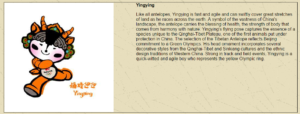
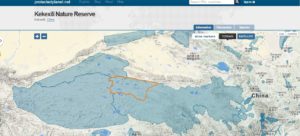
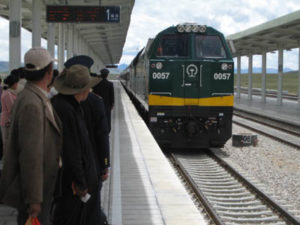


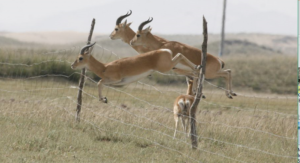
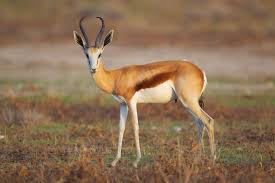
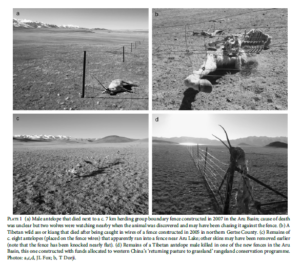
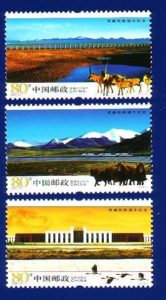
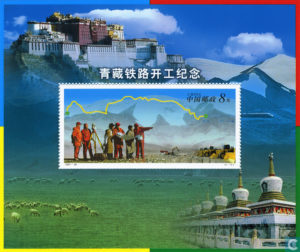
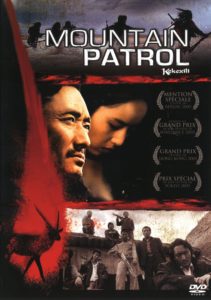

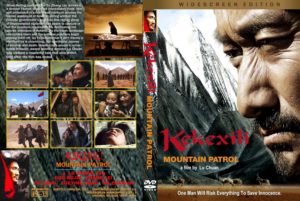

3 replies on “IN THE “NO-MAN’S LAND” OF TIBET”
Too bad the photo you have used just before the section Exclusionary Regulations is NOT Tibetan antelope (chiru) but gazelle (cant tell if they are Tibetan gazelle or
Przewalksi gazelle)
[…] http://rukor.org/in-the-no-mans-land-of-tibet/ […]
[…] are indigenous to the area. The heritage site nomination was part of an effort to protect the chiru species, Pantholops hodgsonii to scientists, tsö in Tibetan, commonly […]